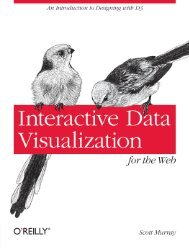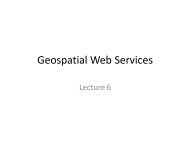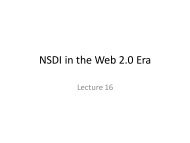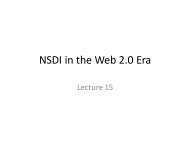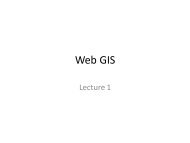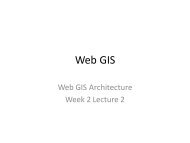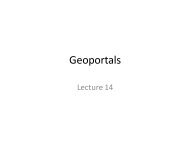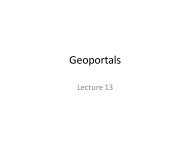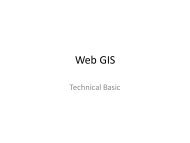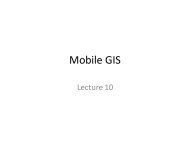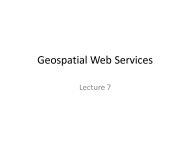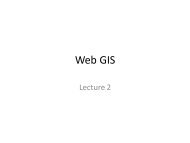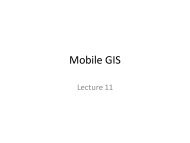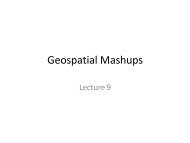geodesign-in-practice
- No tags were found...
Create successful ePaper yourself
Turn your PDF publications into a flip-book with our unique Google optimized e-Paper software.
how the model and its output can be used to evaluate different<br />
land-use options. Pr<strong>in</strong>cipal wildlife management stakeholders,<br />
<strong>in</strong>clud<strong>in</strong>g the local community, private conservancies,<br />
nongovernmental organizations, and the government, could work<br />
collaboratively (despite potentially oppos<strong>in</strong>g plann<strong>in</strong>g priorities)<br />
to determ<strong>in</strong>e a mutually agreeable way to plan for future uses of<br />
the land.<br />
The goal <strong>in</strong> conduct<strong>in</strong>g this research was to develop the ideas<br />
and test the methods for apply<strong>in</strong>g UPlan <strong>in</strong> rural, groupmanaged<br />
lands <strong>in</strong> Kenya, recogniz<strong>in</strong>g all along that these<br />
methods and results should be taken back to the local people<br />
for their full value to be realized. The expectation is not that<br />
ArcGIS applications like UPlan be placed <strong>in</strong> the hands of Maasai<br />
herdsmen. Rather, local support organizations such as the ACC<br />
would manage the technical aspects of the process and work<br />
with local stakeholders to visualize and evaluate model results.<br />
ACC could operate the models, produce maps, and work directly<br />
with the local people us<strong>in</strong>g the Swahili or Maasai languages<br />
<strong>in</strong>stead of English. An iterative process of develop<strong>in</strong>g alternatives,<br />
observ<strong>in</strong>g potential outcomes, and modify<strong>in</strong>g parameters as<br />
needed to develop and evaluate new alternatives (follow<strong>in</strong>g the<br />
<strong>geodesign</strong> paradigm) would keep people <strong>in</strong>volved and engaged<br />
at all levels of the process. ACC has expressed a keen <strong>in</strong>terest <strong>in</strong><br />
mov<strong>in</strong>g forward with this work. The ma<strong>in</strong> obstacles, as is so often<br />
the case with <strong>in</strong>ternational collaborations, have been time and<br />
fund<strong>in</strong>g.<br />
It will be an <strong>in</strong>formative experiment to take the next steps<br />
and make these methods and results available locally and see<br />
how they are used to support Maasai group ranch subdivision<br />
decisions.<br />
About the Author<br />
Karen Beardsley, PhD, GISP, has worked for the Information<br />
Center for the Environment, Department of Environmental<br />
Science and Policy, at the University of California, Davis, s<strong>in</strong>ce its<br />
<strong>in</strong>ception <strong>in</strong> 1994 and is currently the codirector of ICE together<br />
with professor James F. Qu<strong>in</strong>n. She has a master's degree <strong>in</strong><br />
geography from the University of California, Santa Barbara, and a<br />
PhD <strong>in</strong> geography from the University of California, Davis.<br />
For more <strong>in</strong>formation, visit www.conservationafrica.org.<br />
See also "How UPlan Works <strong>in</strong> California."<br />
(This article orig<strong>in</strong>ally appeared <strong>in</strong> the Summer 2012 issue of ArcNews.)<br />
Geodesign <strong>in</strong> Practice: Design<strong>in</strong>g a Better World<br />
J10221<br />
From Urban California to Rural Kenya<br />
34




